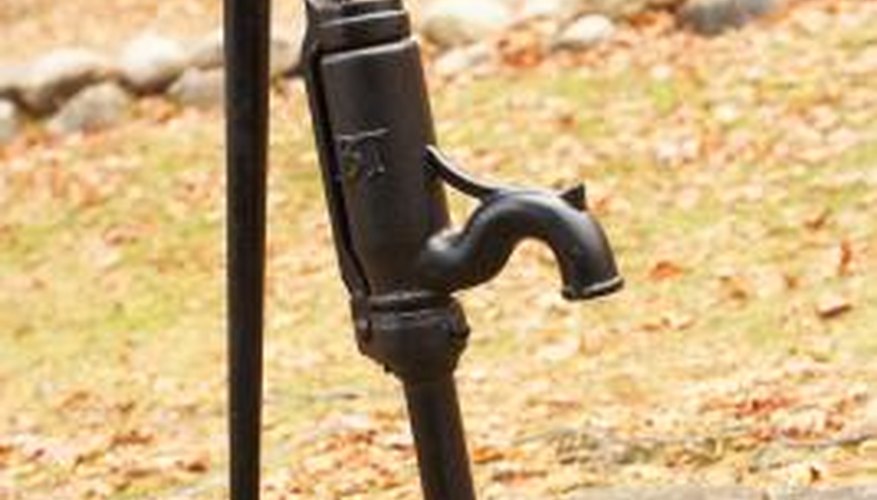A sand point well is one of the simplest solutions for a water supply. Installing a sand point well requires little in the way of equipment and can be completed in less than a day. There are two requirements that should be kept in mind before attempting to install a sand point well. The first is the soil type where the well will be installed. As the name implies, this type of well is intended for areas with sandy soil, free of large rocks and beds of clay. The second factor is the depth of the water table. Sand point wells are most efficient when the water table is within 40 feet of the surface.
- A sand point well is one of the simplest solutions for a water supply.
Thread a section of pipe onto the driving point. Wrap the threads for all joints with Plumber's tape or apply pipe compound to reduce the risk of leaks. Use the pipe wrenches to tighten each joint. Small leaks will allow air to enter the well pipe and reduce the pump's efficiency.
Tighten the threaded cap onto the open end of the pipe. The pipe driver slams against the end of the pipe repeatedly during the drilling process. Without a cap, the threads on the end of the pipe will be damaged. Attaching additional pipe lengths will be impossible if the threads on the working pipe are damaged.
- Thread a section of pipe onto the driving point.
- Tighten the threaded cap onto the open end of the pipe.
Stand the well pipe straight up with the drive point resting on the ground. Place the pipe driver over the top of the pipe. Drive the pipe into the ground until the top is about 18-inches above the surface. A pipe driver is a section of steel pipe with a cap welded on one end. It is sized slightly larger than the diameter of the well pipe so that it can slide over the top of the pipe being driven. The welded cap acts as a hammer while the pipe acts as a guide to keep the force of the blows directed as straight down as possible.
Remove the pipe driver. Unscrew the driving cap. Attach a second length of pipe, if needed. Coat the threaded ends of each pipe with Plumber's tape or pipe compound. Thread a coupler onto the section of pipe sticking out of the ground. Insert the second section of pipe into the coupling and tighten both pipes to the coupling. Place a pipe wrench on the upper and lower section of pipe and twist until they are tight.
- Stand the well pipe straight up with the drive point resting on the ground.
- Place a pipe wrench on the upper and lower section of pipe and twist until they are tight.
Continue driving and adding pipe until the proper depth has been reached.
TIP
Sand point wells usually have a pipe diameter of 1 ½ to 2-inches. This makes them suitable for surface pumps only. Remove the driving cap periodically while drilling and pour water down the pipe. Static or slowly draining water will lubricate the driving point. Rapidly draining water indicates that the point of the well has reached the aquifer. Once the tip of the well is in the aquifer, use a hand pump or utility pump to clear sand from the well pipe before attaching a service pump.
WARNING
Sand point wells are subject to surface water contamination. Wells used for potable water should be placed carefully where they will not be subject to sewage or chemical runoff.
